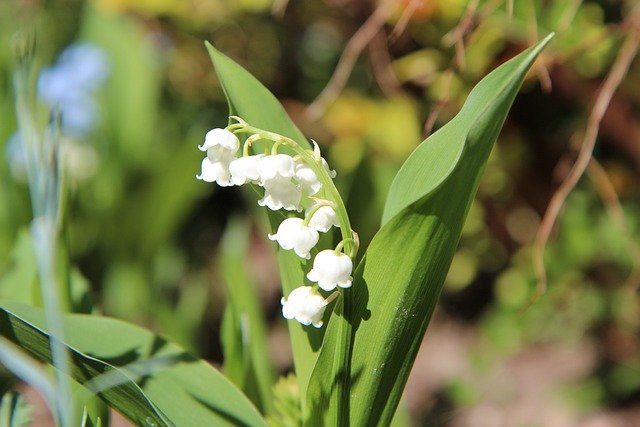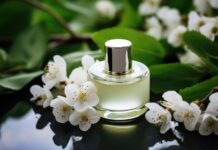Lily of the Valley (Convallaria majalis) is not only admired for its beauty and fragrance but also valued for its historical and medicinal uses. Known for its potent properties, this plant has been utilized in traditional medicine for centuries. Here’s an in-depth look at the health and wellness benefits of Lily of the Valley.
Traditional and Modern Medicinal Uses
Historical Background
Lily of the Valley has a rich history in traditional medicine, dating back to ancient civilizations. In medieval Europe, it was used as a remedy for heart problems, epilepsy, and skin conditions. Its use was recorded by herbalists like Nicholas Culpeper in the 17th century, who praised its efficacy in treating ailments related to the heart and nervous system.
Modern Applications
In modern herbal medicine, Lily of the Valley continues to be used, although with more caution due to its potent nature. The primary active components, cardiac glycosides, make it valuable for treating certain heart conditions.
Potential Health Benefits and Therapeutic Properties
Cardiovascular Health
- Heart Tonic: The cardiac glycosides found in Lily of the Valley, such as convallatoxin and convallamarin, have a positive inotropic effect, meaning they increase the force of heart contractions. This makes the plant useful in treating heart failure and other cardiovascular issues.
- Regulating Heart Rhythm: It can help regulate heart rhythm, making it beneficial for conditions like arrhythmia.
Diuretic Properties
- Fluid Retention: The plant has diuretic properties, which can help reduce fluid retention in the body, a common issue in heart failure patients.
Anti-inflammatory and Analgesic Effects
- Pain Relief: Traditionally, Lily of the Valley has been used to relieve pain and inflammation. This makes it potentially useful for treating conditions like arthritis and gout.
Antispasmodic Properties
- Muscle Spasms: It can help alleviate muscle spasms and cramps, providing relief for various muscular ailments.
Herbal Remedies and Applications
Tinctures and Extracts
- Tinctures: Made by soaking the flowers or roots in alcohol, tinctures of Lily of the Valley are used in small, controlled doses to treat heart conditions and fluid retention.
- Extracts: Concentrated extracts are also used for their potent heart-toning effects.
Infusions and Decoctions
- Infusions: An infusion of Lily of the Valley flowers can be used topically to treat minor wounds and skin conditions.
- Decoctions: A decoction made from the roots may be used for its diuretic and anti-inflammatory properties.
Poultices and Compresses
- Topical Applications: Poultices made from crushed Lily of the Valley leaves or flowers can be applied to bruises and minor injuries to reduce inflammation and promote healing.
Safety Precautions and Side Effects
Toxicity Concerns
- Highly Toxic: All parts of Lily of the Valley are highly toxic if ingested in large quantities. The plant contains cardiac glycosides, which can cause severe poisoning.
- Symptoms of Poisoning: Symptoms include nausea, vomiting, diarrhea, abdominal pain, confusion, and potentially life-threatening heart disturbances.
Safe Usage Guidelines
- Dosage: It is crucial to adhere to recommended dosages and use Lily of the Valley under the guidance of a qualified healthcare provider.
- Not for Self-Medication: Due to its potency and toxicity, Lily of the Valley should not be used for self-medication.
Incorporating Lily of the Valley in Herbal Medicine
Professional Guidance
- Consult a Herbalist: Always consult with a professional herbalist or healthcare provider before using Lily of the Valley in any form.
- Pharmaceutical Preparations: Consider using pharmaceutical preparations that contain controlled doses of the plant’s active ingredients.
Combining with Other Herbs
- Herbal Formulations: Lily of the Valley can be combined with other herbs to enhance its therapeutic effects. For example, it is often combined with hawthorn for heart health.
Growing and Harvesting
- Cultivation: If you plan to grow Lily of the Valley for medicinal purposes, ensure it is planted in a safe, controlled environment.
- Harvesting: Harvest the flowers and leaves in spring when they are in full bloom for the best potency.
Conclusion
Lily of the Valley is a powerful medicinal plant with a long history of use in treating various health conditions, particularly those related to the heart. However, due to its potent and toxic nature, it should be used with caution and under professional guidance. With proper use, Lily of the Valley can offer significant health and wellness benefits, making it a valuable addition to the herbal medicine cabinet.
FAQs:
Lily of the valley is important for its symbolic meanings of purity, humility, and a return to happiness, making it popular in bridal bouquets and religious ceremonies. Its delicate appearance and enchanting fragrance also make it a cherished ingredient in perfumery.
Certain types of lilies, such as the Madonna lily, have been used in traditional medicine for their anti-inflammatory and wound-healing properties. They are sometimes used in preparations to soothe skin irritations and to promote healing.
Lily of the valley is known for its astringent and soothing properties, making it beneficial in skincare products to tone the skin and reduce inflammation. Its extracts are sometimes used in formulations to calm and refresh the skin.
Lily seeds, particularly from species like the water lily, are known for their nutritional benefits, including being a good source of protein, fiber, and essential minerals. They are used in traditional medicine to support digestion and enhance overall vitality.
No, you should not drink lily of the valley. All parts of the plant are highly toxic and can cause severe poisoning if ingested, leading to symptoms such as nausea, vomiting, heart arrhythmias, and even death.
Lily flowers are often associated with spiritual meanings of purity, renewal, and the divine. They are used in various spiritual and religious ceremonies to symbolize the soul’s journey towards enlightenment and the purity of the heart.
Water lilies have been used in traditional medicine for their calming and sedative properties. They are believed to help reduce anxiety, promote relaxation, and support the healing of wounds and skin irritations.















